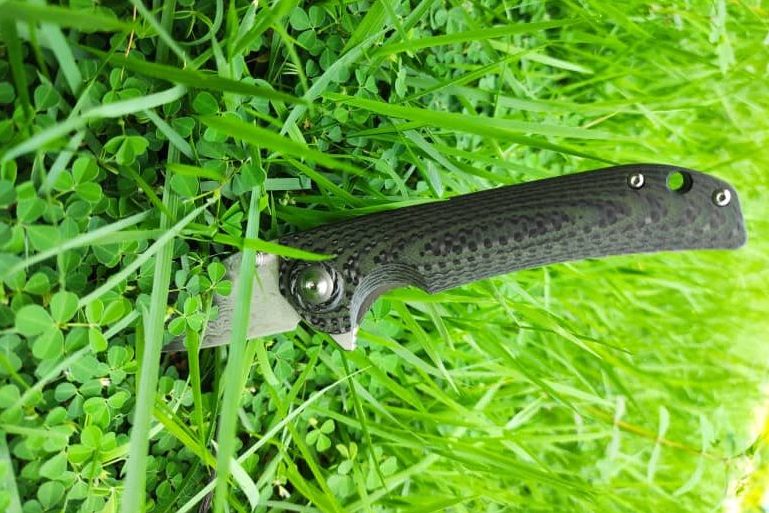What makes an outdoor folding knife special? What are the features that set it apart from the rest of the knives? These are some of the questions we are going to answer to help you figure out the right folding knife for your outdoor activities.
Finding the best pocket knife brand can be a hassle if you don’t even know the features you are supposed to be on the lookout for. To save you the legwork, we are going to look at some of the notable features that make folding knives the ideal outdoor tools. So sit back, and by the end of this article, you will be wiser and more informed.
Closing and Opening Mechanism
A knife is never considered a folding knife unless it can be closed into itself for storage. Unlike fixed blades that require a sheath, a folding knife comes with an opening and closing mechanism that allows the user to open the knife quickly when they need to use it and close it safely once they are done. This is a feature that makes folding knives such great tools to have since they can be carried even in the pocket due to their diminutive sizes once they have been closed.
Thick Blade
Survival knives are designed to handle the most extreme tasks and to be used in the most demanding conditions. Think of a military man who has to survive in a desert or in a jungle full of dangerous animals and hardy plants. Without a knife that can stand its ground against these conditions, they will perish. A proper survival folding knife must have a thick blade that can cut through just about anything without breaking apart. The average survival knife must have a blade thickness that ranges between 3/16 of an inch to ¼ of an inch.
Strong Blade Materials
In the same breath with durability and hardiness, a survival knife must have a blade that is constructed using the best and the strongest material that money can buy. There are many forging techniques that are used to make the blade stronger. In the case of a survival knife, that process is taken a notch higher, and some of the most reliable materials used to construct these blades include carbon fiber, stainless steel, or titanium. These are the kinds of materials that don’t chip easily and can serve you for many years despite heavy usage.
A Blade Spine
The spine of the blade is the top part that’s opposite the cutting edge, and it serves a lot of purposes in a survival knife. For starters, it provides a pivoting surface for the fingers when you are cutting something tough. You may have to apply some pressure on the spine to make the cutting easier without injuring yourself. For most survival knives, the blade spine is usually angled at 90 degrees, and it can be used for a number of purposes like scraping wood, creating fire kindling by striking it against hard rocks or other metals without denting the cutting edge.
Grooved Handle
The blade has to retract back into the handle during storage, and the only way this can be pulled off is by having a grooved incised into the handle. This groove is designed to fit the blade like a glove. It can’t be too small as that will prevent the blade from being folded properly, and that will make storage hard. It shouldn’t be too big either, as that will make the blade come out on its own, leading to injuries in a situation where you have the knife stored in your pocket, and you dip your hands inside. The handle can be made from any material, but a majority of them are made using high-quality plastic.
Blade Grind
A blade grind is another standout feature of any proper survival knife. When choosing a survival knife of any kind, it is always recommended that you pay close attention to the grind as that affects the overall efficiency of the blade in the long run. There are many types of blade grinds, but the two most common ones that you are likely to find on a survival knife are the flat grind and the Scandinavian grind. The latter is the more popular one of the pair because blades that feature this kind of grind are easier to maintain and stand a better chance when it comes to dealing with extreme conditions and tasks.
Pointed Blade
Every survival knife has to have a pointed blade for it to function properly. Survival knives are outdoor tools, and this means they are subjected to a much harder and extreme environment than other knives. For them to be used for all purposes, they have to possess a pointed end that can be used for stabbing, digging, bleaching skin, among other functions that anyone who is out camping or hunting would need.
Some come with pointed tips that are much sharper than others, while a good number of some survival knives have a gentle point that either curve upwards or downwards. All these variations are not an accident; they are designed to serve specific functions. If you are not familiar with how they work, being a first-timer, then ensure you ask around before making any purchase to avoid ending up with the wrong blade in your possession.
Conclusion
Outdoor folding knives are unique knives, and each knife manufacturer has its own way of designing its products to make them more competitive and better than those from their rivals. Narrowing down your search to find the right survival folding knife can be a little hard unless you are a veteran in the game. If this is too much for you to handle, simply drop us a call or an email and have all your questions and concerns answered by a team of qualified experts.
You can also follow us through the following ways:
https://www.facebook.com/ShieldonCutlery
https://www.instagram.com/shieldon_knives_and_tools/
https://www.youtube.com/channel/UC_Dz–HODWHFY4AaUF0z11Q
https://twitter.com/Shieldonknives1/
https://shieldonknivesandtools.tumblr.com/
https://www.linkedin.com/company/72285346/
https://www.pinterest.com/shieldonknivesandtools/
More video introductions:





